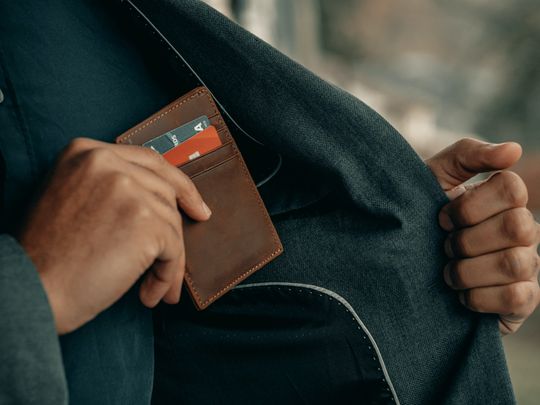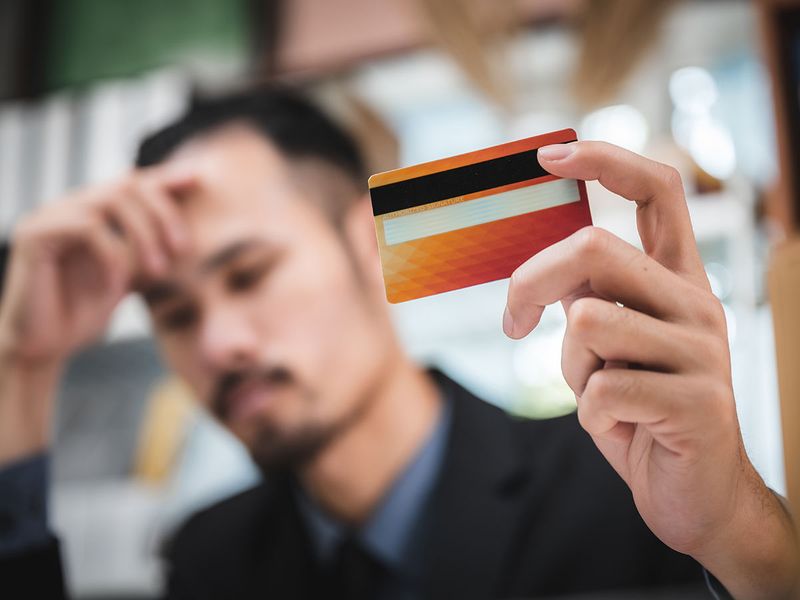
Dubai: Budgeting is all about avoiding spending money that you don’t have, but when you take out a credit card, you spend money you don’t have. So how can the two co-exist?
Although the words ‘credit card’ and ‘budget’ are two words rarely used in the same sentence, there are ways wherein credit cards can be used to elevate your budgeting skills and even help improve them.
However, keep in mind that credit cards can still pose serious threat to your financial plans if you use them without a budget or without personal limits.
Apart from high interest, unsecured debt still being an escalating issue, compounding the problem further is the fact that the average credit card annual percentage interest rate (APR) remains a steep 20 per cent globally, making it difficult for users to make a dent in their balances as interest balloons.

The go-to logic to avoiding the pitfalls of credit is this - consolidate debt at a lower interest rate using a balance transfer credit card or a personal loan, create a plan to pay off all debts as soon as possible and stop using credit altogether.
However, not everyone needs to resort to such drastic measures. Moreover, it’s possible to enjoy rewards and other related purchase protection schemes without racking up debt or ruining your financial goals.
How credit cards can help budget
At the most basic level, credit cards have two valuable uses for budgeting: The cards help you manage cash flow by granting you 30 days to pay, interest-free and secondly, they help you track every expense you make – very helpful for budgeting.
The cash flow advantage helps you smooth out your income and spending needs throughout the month so you don’t get caught with a big expense on the 25th when your salary doesn’t arrive until the 30th.
Tracking your expenses help you understand where you spend all of your money on a month-to-month basis. Some credit cards even come with helpful online tools that help you categorise and chart your expenses.
There are other benefits to a credit card that cash or debit cards don’t offer, like building credit history, providing flexibility between salaries, and earning rewards. The trick, planners add, is to spend smarter with your credit card, so that you don’t end up trapped under a mountain of credit.
To make sure credit is working for you and not against you, you should use your credit cards for these purchases to earn rewards, but check in with your budget periodically to make sure you’re on track.
Budget using your salary, not your credit limit
A budget starts with how much you have to spend in a given month and even with a credit card, that number should come from your monthly income - not the thousands of dirhams in credit limit that’s given.
The goal should be to use as little of your credit limit as possible, not as much of the limit. That will help you stay on track with your budget and even help raise your credit score.
Using your credit card only for fixed costs
Global surveys have shown that people spend more when they’re using a credit card versus cash. This is why one reason financial planners say the cash envelope system is successful. If you only have Dh50 to spend for the week, then that’s all you’re going to spend.
That’s why planners add that it’s a good idea to designate your credit card for fixed costs only — and leave it at home when you’re heading to the mall or going out to eat.
If you know every month that your credit card bill will consist of your subscription service costs and your phone or electricity bills, it will be that much easier to plan for it and pay it off.
When using credit cards alongside a monthly written budget, use your card instead of cash for regular bills and purchases you make in discretionary categories like groceries, dining out, and entertainment.
And unlike cash in envelopes, a credit card won't run out unless you hit your credit limit and have your purchases denied. However, this practice cannot succeed without adhering to the categorical spending limit as used in the ‘cash envelope system’
And if let’s say your goal is to earn rewards, then in that case, you may want to consider different credit cards that align well with the categories you spend the most in.

How to build a budget with a credit card
When you’re creating a budget for the first time, you need to first calculate your actual monthly expenses. Here’s where your credit card statement comes in handy.
Once all of your expenses are listed, you then compare the final total to your actual income. By importing your credit card accounts into offline budgeting tools that are freely available, this is automatically done for you.
For example, you might think you’re spending Dh500 on food for your family of four. Then you can actually set up budgets for spending categories and see how you’re doing in real time. So, if you decide you only want to spend Dh150 a month eating out, you can set up a budget with that constraint, and you’ll see when you’re approaching your limit.
If you don’t use these budgeting tools, you can still find out how much you’re spending by going through the last few month’s bank and credit card statements. Just tally your expenses up in relevant categories – food, utilities, entertainment, exercise, restaurants, etc. – to see where you stand.

Creating a realistic for the following month is key
If it’s time to create new budget limits that you can live with, one way to start whittling things down is to take your average spending in each unfixed category and cut it down by 20 per cent next month.
For example, if you spent Dh900 on groceries last month, you could limit yourself to Dh720 from now on. If you find that works well, cut it down another 10 per cent or 20 per cent next month, and so on.
Planners reiterate that you would want your budget categories to be realistic, but also pacify that it’s okay if you feel a little squeeze.
Once your new budget is ready, start the new month with new budget expectations, which is also where your credit card comes in. Instead of using cash or debit, you’ll start putting all of your purchases on your credit card. Then, at least once per week, you can check where you stand with your new budget.








_resources1_16a30b358e0_small.jpg)

